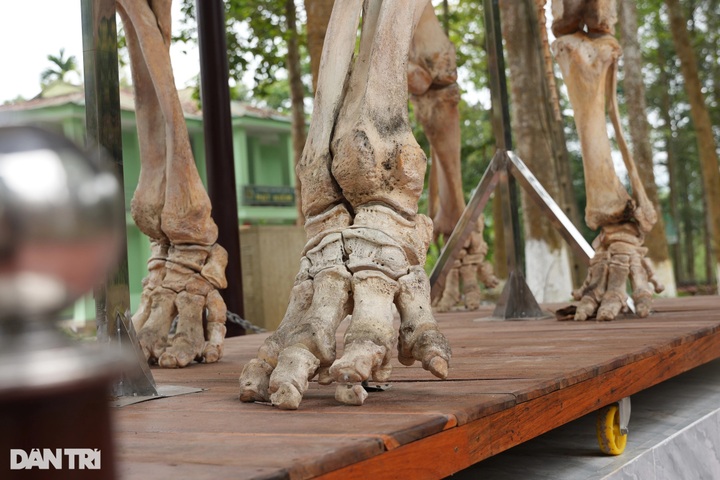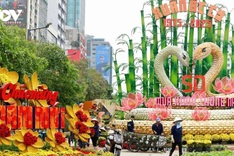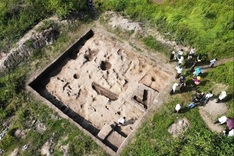
Visitors see the skeletons of elephants at Pu Mat National Park.
Two complete skeletons of Asian elephants, kept in their original form at Pu Mat National Park, attract tourists and deliver a powerful conservation message about protecting this endangered species in the country.
In early 2024, rangers at the park in the central province of Nghe An discovered two wild elephants dead in the local forest area. No signs of human or predator attack were found at the scene, and investigations showed that the animals had died of old age.
The park decided to preserve the skeletons as educational specimens. It submitted its proposal to the relevant authorities and received official approval.
The elephant carcasses were initially buried to speed up soft tissue decomposition. After a period of natural decay, experts excavated the skeletons, cleaned the bones with specialized solutions, and bleached them to ensure durability and visual appeal.

Some damaged bones were reconstructed using synthetic materials to ensure anatomical accuracy and proportion. The process took nearly 12 months before the two full skeletons were displayed at the park's visitor centre.
Le Anh Tuan, director of Pu Mat National Park, said, "These are not just display specimens. They are vivid evidence of our biodiversity and convey a strong message about the urgent need for wildlife conservation. The skeletons can't speak, but they have the power to make people stop, reflect, and take action."

Nghe An province is home to only 13 to 15 wild Asian elephants scattered across Pu Mat National Park and the adjacent Pu Huong Nature Reserve. In Pu Mat alone, 7 to 8 individuals have been recorded, most fully grown, including elderly elephants that can no longer reproduce.
The rapid decline of the elephant population presents a major conservation challenge. Wild elephants in Nghe An could vanish within a few decades without urgent measures such as reproductive support, habitat management, and anti-poaching efforts.
In response, Pu Mat National Park has submitted a proposal to the Nghe An Provincial People's Committee and relevant agencies to implement an urgent elephant conservation project. The plan includes strict protection zones, the application of tracking technology, community training, and awareness campaigns.
Covering over 94,000 hectares of core zone and 86,000 hectares of buffer zone, Pu Mat is one of Vietnam's most biologically diverse forest areas. The park has 82 wild animal species from 33 families, including mammals, birds, amphibians, and reptiles. Notably, 48 species are endangered, with 26 listed in Vietnam's Red Data Book and 21 in the IUCN Red List.




















